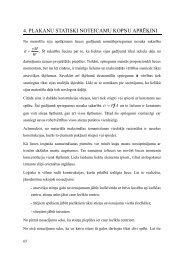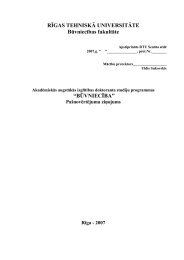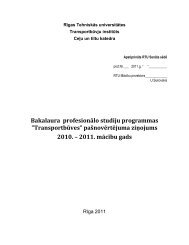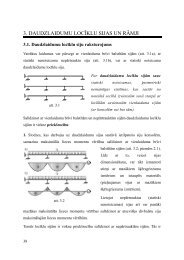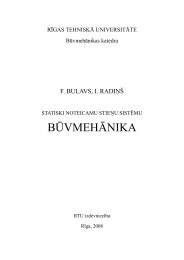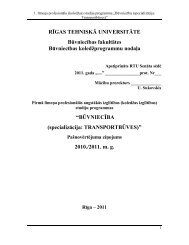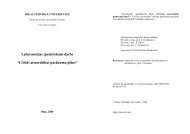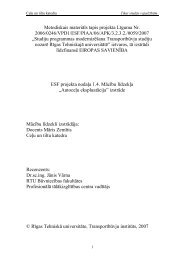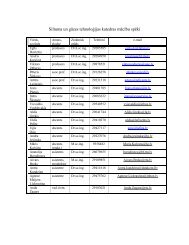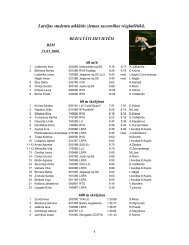You also want an ePaper? Increase the reach of your titles
YUMPU automatically turns print PDFs into web optimized ePapers that Google loves.
Free Damped Vibrations of Sandwich Shells of Revolution 173<br />
The vibration and damping analysis of sandwich shells has not been attempted<br />
so far and it is a subject of the present investigation. The natural frequencies and<br />
the loss factors of cylindrical, conical and spherical shells are calculated. A sandwich<br />
shell finite element based on the zig-zag model and described in Reference<br />
[12] is used for the dynamic analysis with damping. The energy method (EM) is<br />
employed to model the damping. The background of the EM is in finding the energy<br />
dissipated in a natural mode by adding up the contributions from the individual<br />
components of deformation. Such approach has been used by several authors,<br />
for example, in References [1,8,29,51]. The EM has been used for damping analysis<br />
of laminated plates [40]. The present paper is an extension of a similar investigation<br />
in the case of laminated shells presented in Reference [26].<br />
Governing Equations<br />
THEORETICAL BACKGROUND<br />
Considering a composite sandwich shell of uniform moderate thickness h with<br />
three anisotropic laminae, each of them may be arbitrarily oriented. The influence<br />
of the interphases between the laminae is neglected that means rigid connection<br />
between the layers. In addition, in the numerical analysis the typical sandwich assumptions<br />
(soft core, the thickness of the outer layers is much thinner in comparison<br />
with the core thickness) are taken into account.<br />
Displacements<br />
The kinematic equations for the first-order shear deformation theory (FOSDT)<br />
including the drilling rotation of the normal can be obtained from three-dimensional<br />
equations of the theory of elasticity using the Taylor series approximation of<br />
the vector of position function in the deformed state with respect to the coordinate<br />
x 3 (see, for example, References [7,39,41]).<br />
Let us introduce curvilinear coordinates x i ={x α ,x 3 } on the midsurface of the<br />
shell in the initial state which is defined by the triad {a α , a 3 }. The use of Greek indices<br />
means the values 1, 2. The unit vector a 3 denotes the normal to the middle<br />
surface of the shell. Curvilinear coordinates X i ={X α ,X 3 } are related to the deformed<br />
state which is defined by the triad {A α ,A 3 }. In the deformed state the vector<br />
A 3 may not be perpendicular to the midsurface of the shell.<br />
The representation of the displacement vector u of an arbitrary point of the shell<br />
with respect to the first-order approximation is<br />
α α α<br />
3 = + 3<br />
u( x , x ) v( x ) x (<br />
x )<br />
(1)<br />
Here v is the displacement vector of the midsurface and denotes the vector of



